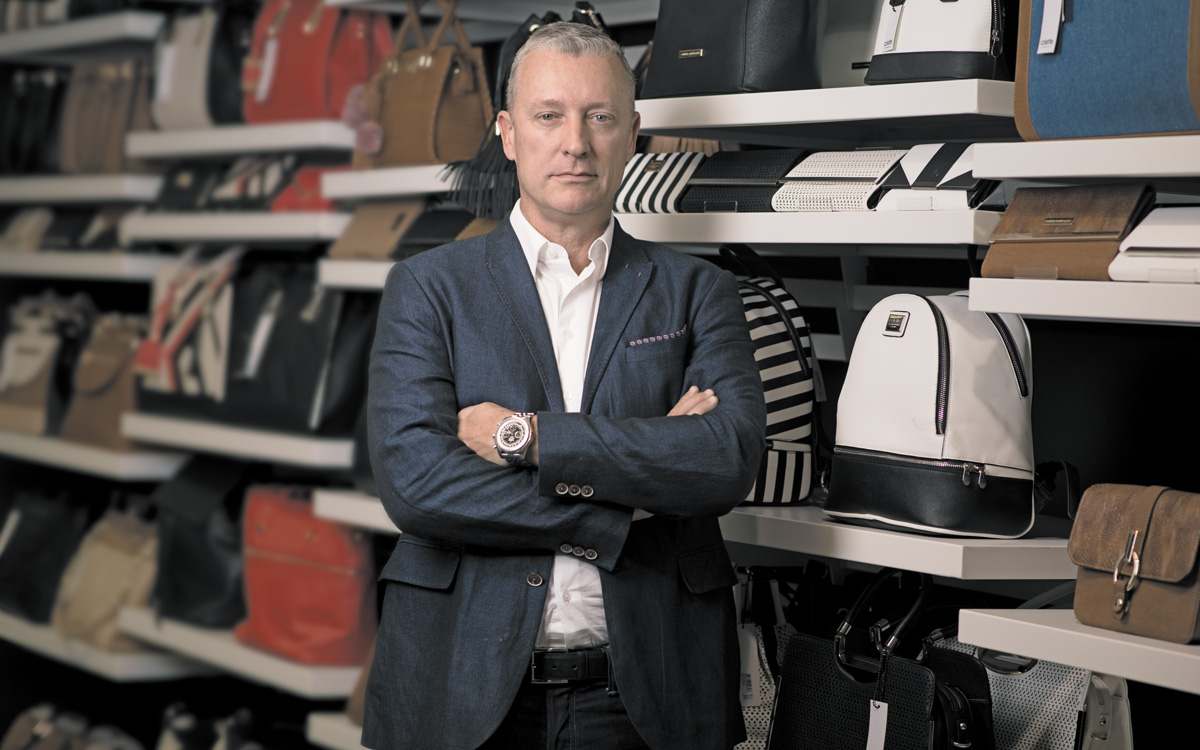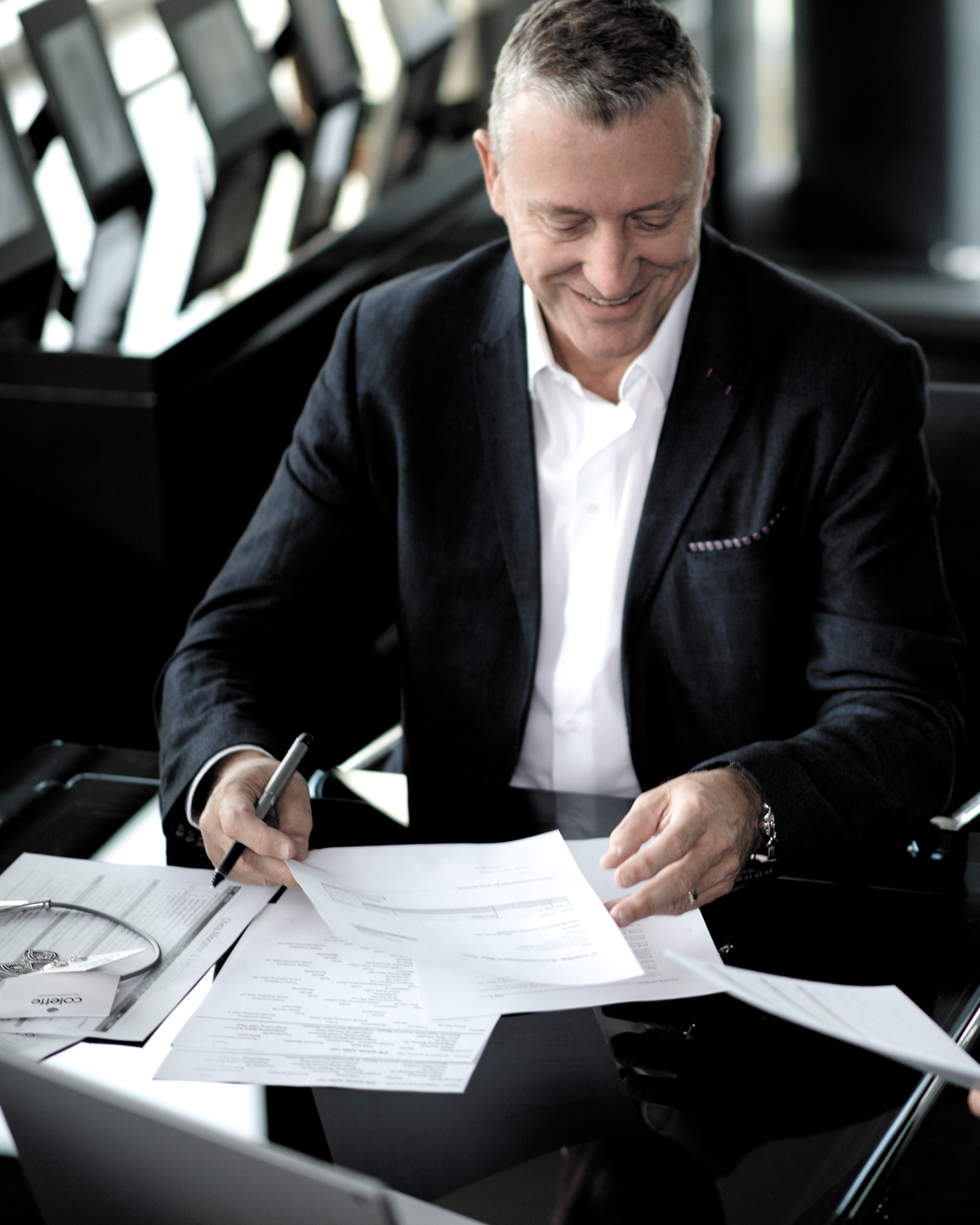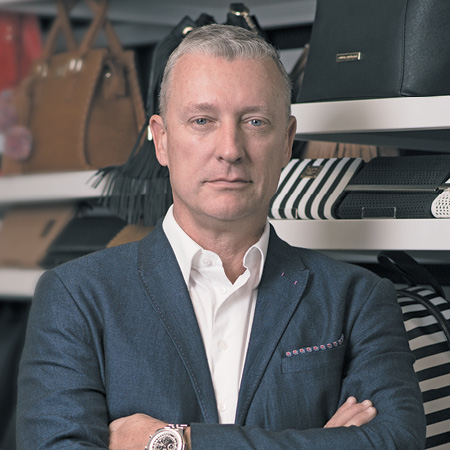For the husband-and-wife team behind Colette by Colette Hayman, the last three years have seen highs and lows, but the outlook now reflects all of the hard work and the couple’s optimism. With new stock arriving every week, the company sells around 3 million handbags and wallets every year, and around 6.5 million pieces of jewellery, to an audience aged between 18 and 35.
Colette currently has more than 100 stores in Australia, will soon have a total of fifteen in New Zealand (the aim is around 165 across the two countries) and is set to open two stores in Saudi Arabia. There is also major development in e-commerce with the focus on Europe, the US, and Britain. “There have been disappointments but on the flip side, we have become more defined in terms of who we are as a brand,” Mark says.
Australia’s largest single-branded handbag retailer
“In the last few years we have become more of a handbag operator, with more than 70-per-cent handbag sales, whereas previously it was more like 55% or 60%. So our greatest achievement is becoming the largest single-branded handbag retailer in Australia. I don’t know if anyone else does the volume we do, or even comes close to it.”

Mark says the company is still strong in jewellery, but handbags have delivered its growth, and that knowledge has helped shape the new look of its stores.
The revamp program is already paying dividends with improved sales. He’s proud of how strong Colette stands in a market that has changed over the last few years, particularly with the big discount department stores moving into the sector. “They flooded the market with poor quality products which confused the customer for a while, but things have stabilised and now we don’t really have any direct competitors other than the branded apparel stores,” he says.
Competing in an international market
The arrival of some major overseas players is having ramifications, but it’s not so much the influx as the response to it. “We have had three years of massive developments where every major shopping centre is expanding its footprint to accommodate the likes of Zara, H&M, Uniqlo, Top Shop, and other brands,” Mark explains. “But while you may increase the shopping centre by 50%, you haven’t necessarily increased the catchment area by 50%. Landlords still expect the same rate per square metre when the revenue from their centre is divided across a much larger footprint. It has not necessarily been the overseas operators, but it’s more the shopping centres’ reaction that affects the industry. A few apparel companies have gone to the wall, so there is some fall-out. Perhaps landlords will start to get a bit more sensitive to what they are doing.”
Despite the shakeout, a recent article in an American magazine suggested Colette has a good strategy, with plenty of future potential. “It talked about a decline in the premium bag offering,” Mark says. “People feel less attached to their luxury bag and more comfortable buying lower-cost brands that can actually complement outfits, rather than having a stable bag for the season. For us that is a great area of opportunity.”

Passionate people: cultural fit as important as skill
The right people — employees and business partners — are key to Colette’s growth and ability to take on new challenges, and so it is focused on building strong relationships with both.
“Culture is important and your teams create a company’s culture. If you bring in people who don’t have the same values, and they don’t want to add to that culture, it starts to erode. One of our biggest achievements is that we always employ 50% on culture and 50% on skill. We sometimes struggle to fill roles because we find people that have the right skills but wouldn’t fit in. We make sure we have a very harmonious head office and we work together with passionate, smart people to deliver one outcome.”
Our greatest achievement is becoming the largest single-branded handbag retailer in Australia.
Management has an open-door policy and employees are encouraged to talk and collaborate. It’s not a company that runs on emails, or on finding scapegoats when things go wrong. “We try to encourage people to come up with new ideas to do things differently,” Mark continues. “Even if we have things in place, we get teams to come up with new ideas and the best ways to do things and then we implement them. One of the biggest things is that we allow people to fail. If something doesn’t work, we work through that together. As a team, if we try and we fail, then we succeed.
“This last year has been absolutely huge for us, but I think it is because there is such a great team culture and mutual respect. We are a very customer-focused business that is looking to get the best outcome for not only the business, but all our customers as well.”
Communicating a shared vision
When it comes to business partners, Mark believes finding the right people, sharing a vision, and keeping the communication lines open is vital. “First and foremost we manage expectations. Everyone needs to make a profit. We drive a hard bargain but mostly people profit from being our partners. We have a strong supplier base and we’ve worked with the same people for a long time. I think the important thing is communication — making sure we are all on the same page and looking to achieve the same target. We encourage people to come up with ideas and deliver new opportunities that we otherwise wouldn’t have thought of ourselves, and we all benefit.”
Mark counts himself fortunate, working with his wife and a team he describes as passionate and talented. He loves the constant challenge to come up with new ideas and ways of doing things, with the aim of better results for all involved with the brand.
The key is to be constantly challenged
“We have only touched the surface in the fashion handbag market, and we continue to build within the business, and that constantly challenges us. I think that is the key — we need to be constantly challenged. We also keep raising the bar regarding our product offering, making it difficult for competitors to try to take business away from us. Customers come into our stores and find that we have the closest offering to any trend going on globally. We are not waiting seasonally, and we are extremely proud of this.”




Great read, very interested to see how the year ahead goes.
Keep up the good work
I feel your styles are not as fashion as before.in the past time on 2010-2012 the styles are all nice and fashion,now it is less fashion.